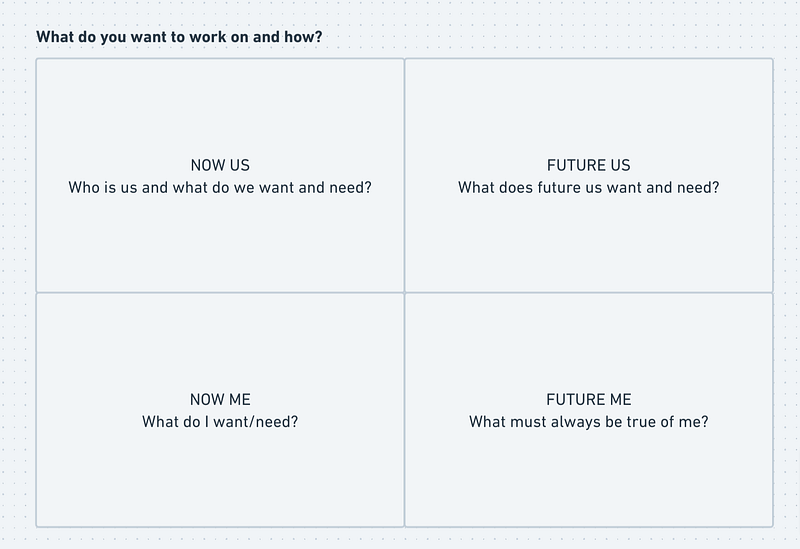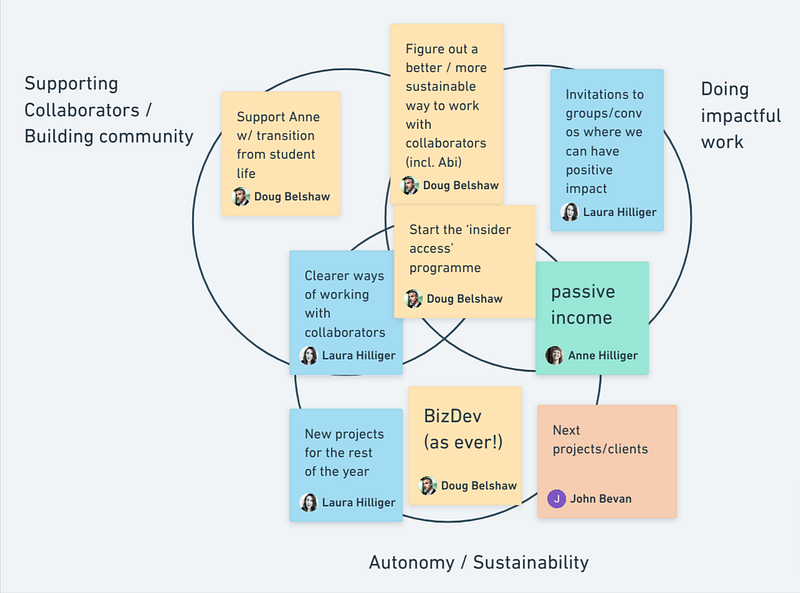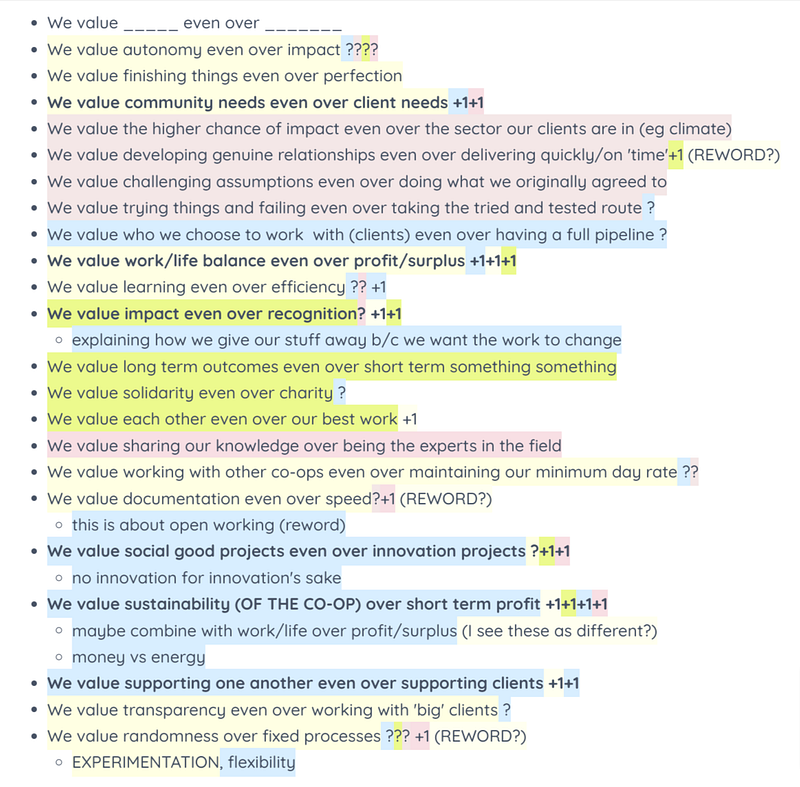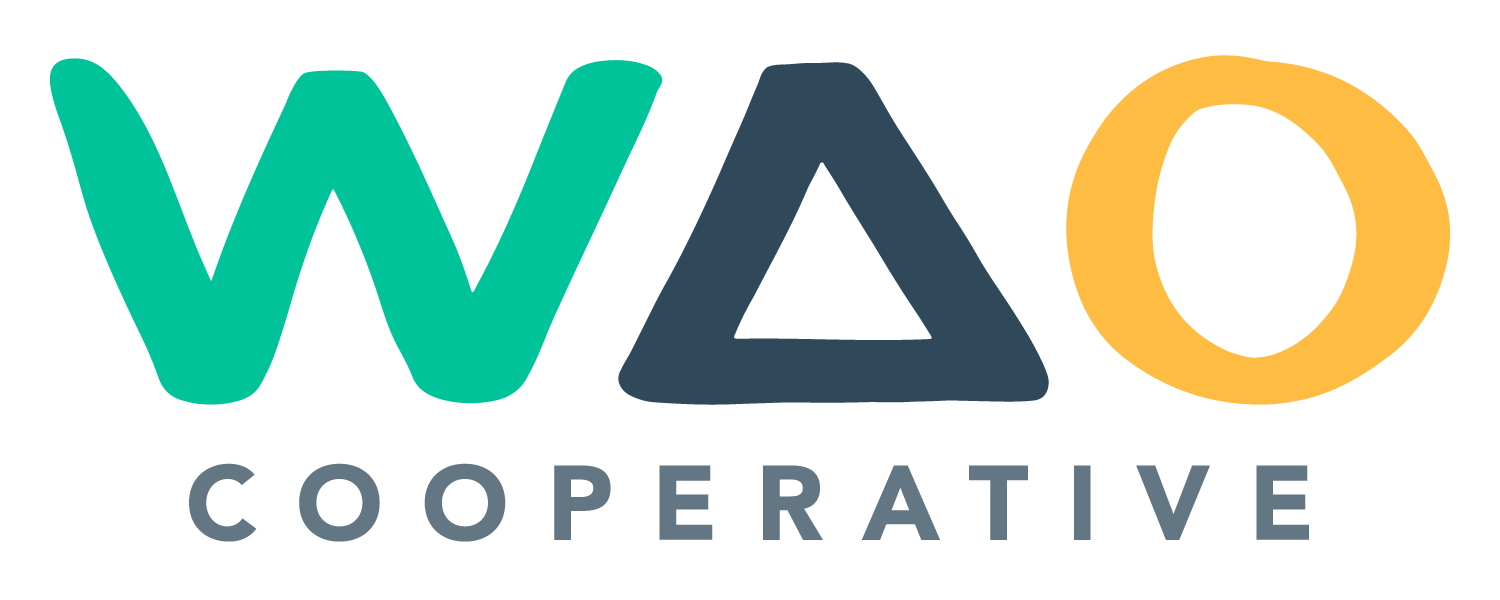
These days, it’s rare to come across a completely blank face when talking to people about Open Badges. That’s because recently we’ve seen mass adoption, meaning that hundreds of millions of badges are now being earned every year. After 12 years, we’re no longer in the world of ‘potential’ use: badges are now helping people get hired.
However, as important as ‘getting hired’ is, it’s possible to go beyond badges as microcredentials for hiring. To use Douglas Rushkoff’s phrase, we can use badges to help ‘find the others’.
Who are these ‘others,’ you may ask? They’re the individuals who share our aspirations, interests, and intentions. They’re those with whom we align not only in our professional competencies but in the philosophies and values that drive us. Through this lens, badges become common symbols, connecting us over shared priorities and paving the way for deeper collaborations.
So, in this post, we’re going to explain how WAO is going through the process of identifying areas to create badges for Open Recognition in a bid to ‘find the others’. We hope that by reading this you might be inspired to do likewise for your organisation, group, or network!
We envisage this being a five step process:
- Identify priority areas
- Badge the priorities
- Find the overlaps
- Create badge imagery
- Find the others
In this post, we’ll cover steps one to three. Once we’re further along our journey, we’ll check back in with a Part 2 which will cover steps four and five!

Step 1: Identify priority areas
In a previous post entitled Practical utopias and rewilding work, we showed the result of some work we’d done during a recent monthly co-op day. We outlined five thematic areas we see as ‘priorities’ for our work.

The result was the diagram above. But how did we come up with these areas?
While planning for our co-op day, we came across two prioritisation approaches that generated excellent results: Even-over statements and the Bento box model. Let’s have a look at what they generated.
Bento box model
We began with the Bento box model from Yancey Stricker’s book This Could Be Our Future: a Manifesto for a More Generous World. It’s a simple activity to run either using paper, or in our case, online using Whimsical. We adapted it very slightly to use the key question: What do you want to work on and how?

The Bento box model is a simple 2x2 grid which asks about wants and needs, for you and the organisation, both now and in the future.
Here’s how we approached this activity:
- Asked everyone to work on their own grid by themselves and begin with NOW ME and then move on to FUTURE ME
- Ran a round of feedback, including how easy/hard we found it. People shared their screens during this bit
- Moved onto NOW US and FUTURE US again doing this individually
- Ran a round of feedback and sharing

After some (timeboxed) discussion, we started talking about how to collate the similarities between what we want/need. We decided upon a Venn diagram, and came up with some labels for the circles which changed multiple times as we discussed and moved virtual sticky notes around!
The idea wasn’t to get to perfection, but to be in ‘exploration mode’. We moved onto our next activity.
Even-over statements
It’s easy to define yourself and your organisation in opposition to something else. For example, as a co-op, we often define ourselves as a counterpoint to capitalist, shareholder-driven oligarchies. But that’s not a statement of what you’re in favour of.
Instead of pitting two things against one another, the even-over approach asks you to prioritise between two good things. So we used an etherpad, each chose a colour, and wrote down some ideas. You can see what we originally came up with below:

We then did the following:
- Read through all of the statements
- Marked the ones we had questions about with a ?
- Ran a round of questions to highlight statements we thought were confusing/unclear
- Read through all of the statements again
- Gave everyone five votes to mark the statements we agreed with most (with a +1)
- Discussed all the statements had more than two votes
- Decided on the statements to take forward, making them bold
Just as with the Bento box activity, we knew this wasn’t ‘finished’ but rather an exploration. We let it percolate after the co-op day for a while.
Eventually, after some more discussion a week or so later, we made a page on our wiki: Our principles even-over everything else. Again, with it being on our wiki, it’s always subject to revision!

Step 2: Badge the Priorities
It was in our second time revisiting these statements that we ended up coming up with our priority areas:
- Sustainable Work
- Open Recognition
- Open Working
- Climate Action
- Worker Ownership
It’s relatively straightforward to badge these, especially if you use an AI tool such as ChatGPT and describe what you want to achieve.
As a result, we came up with a name, description, and criteria for each priority area. Ideally, each of these would have smaller, more granular badges underneath them, but we can get to those later.
🔁 Sustainable Work Advocate
- Description: This badge is awarded to individuals who demonstrate a commitment to promoting sustainable work practices in their organisation or community.
- Criteria: To earn this badge, individuals must submit evidence of their efforts to promote sustainable work practices. This could include initiatives such as promoting fair labour practices.
👍 Open Recognition Champion
- Description: This badge is awarded to individuals who actively recognise and uplift the skills, knowledge, and competencies of others in a transparent and accessible way.
- Criteria: To earn this badge, individuals must submit examples of how they have recognised others’ skills and competencies. This could include testimonials, endorsements, or digital badges they have issued to others.
💬 Open Working Proponent
- Description: This badge is awarded to individuals who demonstrate a commitment to open, transparent, and collaborative working practices.
- Criteria: To earn this badge, individuals must submit evidence of their commitment to open working. This could include examples of their contributions to open-source projects, or initiatives they have led to promote transparency and collaboration in their workplace.
🌱 Climate Action Enthusiast
- Description: This badge is awarded to individuals who actively contribute to climate action initiatives, whether in their workplace, community, or personal life.
- Criteria: To earn this badge, individuals must submit evidence of their contributions to climate action. This could include initiatives they have led to reduce carbon emissions, or involvement in campaigns or organisations focused on climate change mitigation.
✊ Worker Ownership Advocate
- Description: This badge is awarded to individuals who support and promote worker ownership and democratic decision-making in the workplace.
- Criteria: To earn this badge, individuals must submit evidence of their efforts to promote worker ownership. This could include involvement in worker-owned cooperatives, or initiatives to promote democratic decision-making in their workplace.
Reading through these badges representing our priority areas, it’s evident that there’s a lot of overlap. So instead of leaving it there, and because we want to ‘find the others’ working at the intersection between our priority areas, we decided to go further….

Step 3: Find the Overlaps

It’s easy to find people who are working on Climate Action. It’s easy to find people who are working on Open Working. But who’s working openly on climate stuff? The same goes for the overlaps between all five of our priority areas.
With five different priority areas, there are 10 possible unique overlaps:
- Sustainable Work / Climate Action
- Sustainable Work / Open Working
- Sustainable Work / Open Recognition
- Sustainable Work / Worker Ownership
- Climate Action / Open Working
- Climate Action / Open Recognition
- Climate Action / Worker Ownership
- Open Working / Open Recognition
- Open Working / Worker Ownership
- Open Recognition / Worker Ownership
We’ve used descriptive names below so that you can see the overlaps. However, in practice we’re likely to use more whimsical names. Why? Because it’s more interesting and fun! Again, AI assistants can be really useful for sparking your imagination around this.
1. Sustainable Recognition Badge
- Description: Issued to individuals or organisations that promote and champion sustainable working practices in their work and in others.
- Criteria: The recipient must demonstrate a commitment to sustainable work practices and have actively recognised or promoted sustainability in others. This could be through initiatives, public recognitions, or successful campaigns promoting sustainability.
2. Open Climate Action
- Description: Issued to individuals or organisations who are working in the open on projects or initiatives directly related to climate action.
- Criteria: The recipient must be involved in an open project or initiative related to climate action. This could involve developing open-source tools for climate change mitigation, or leading an open project to promote climate awareness.
3. Worker-Owned Sustainability
- Description: Issued to worker-owned cooperatives that implement sustainable practices and advocate for sustainability in their industry or community.
- Criteria: The recipient should demonstrate a commitment to sustainable practices in their work and have advocated for sustainability within their industry or community. This could involve implementing green practices in their own work or spearheading sustainability initiatives in their industry.
4. Open Worker Recognition
- Description: Issued to individuals or organisations that excel in recognising and promoting the benefits and values of worker ownership in an open and transparent manner.
- Criteria: The recipient should have shown a commitment to recognizing and promoting worker ownership in an open manner. This could be through creating open resources on worker ownership, publicly recognizing worker-owned cooperatives, or leading initiatives promoting worker ownership.
5. Climate Conscious Worker Badge
- Description: Issued to individuals in worker-owned cooperatives who actively participate in initiatives or projects aimed at mitigating climate change.
- Criteria: The recipient should be part of a worker-owned cooperative and involved in a project or initiative aimed at climate change mitigation. This could involve leading a green initiative within the cooperative, contributing to a climate-focused project, or advocating for climate action within their cooperative.
6. Sustainable Open Working Badge
- Description: Issued to individuals or organisations that integrate sustainable practices into their open working processes.
- Criteria: The recipient must demonstrate a commitment to sustainable work practices and have integrated these practices into their open work processes. This could be through using open-source tools to promote sustainability or sharing their sustainable practices in an open and transparent manner.
7. Sustainable Climate Action Badge
- Description: Issued to individuals or organisations that incorporate sustainability into their climate action initiatives.
- Criteria: The recipient should have been involved in a climate action initiative that also promotes sustainability. This could involve working on a project that aims to reduce carbon emissions or advocating for sustainable practices as a means to combat climate change.
8. Open Recognition Climate Action
- Description: Issued to individuals or organisations that recognize and promote open recognition in the realm of climate action.
- Criteria: The recipient should have recognized or promoted the importance of open recognition in climate action initiatives. This could be through recognizing the contributions of individuals to climate action initiatives, or promoting the use of open badges within the field of climate action.
9. Open Working Climate Action
- Description: Issued to individuals or organisations that apply open working practices to their climate action initiatives.
- Criteria: The recipient should have applied open working practices to a climate action initiative. This could involve collaborating on an open-source project aimed at climate change mitigation, or promoting transparency and collaboration in climate action initiatives.
10. Worker Ownership Climate Action
- Description: Issued to worker-owned cooperatives that actively participate in climate action initiatives.
- Criteria: The recipient cooperative should have participated in a climate action initiative. This could involve leading a green initiative within the cooperative, contributing to a climate-focused project, or advocating for climate action within their cooperative.

As shown in the image above, the Open Badges standard has additional metadata that we could consider adding. For example, there may be a standard or framework we could align with such as the Sustainable Development Goals. Also, it could be that we want to add evidence, or even make the badge expire.

Next steps
As mentioned in the introduction, we’re still working on this, but in the spirit of working openly wanted to share where we’ve got to so far. Next up will be badge design and then issuing our badges to people and organisations we come across who are working at the intersections and overlaps we want to target.
We’d love your feedback, especially if you try this approach yourself, so please do let us know in the comments, or on Mastodon, Twitter, or LinkedIn!

Discussion